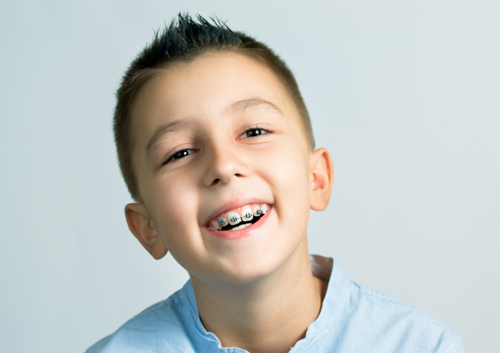The Importance of Orthodontic Treatment at a Young Age
January 19th, 2016

When you think of orthodontic treatment, you may automatically assume that it only relates to older children and teens with alignment and spacing issues. But this isn’t the case: Orthodontic treatment at Prairie Ridge Orthodontics offers many benefits when applied at a young age.
By considering orthodontic treatment at a younger age, Dr. Jeff Loveless and our staff are able to identify your child’s alignment issues early on, and are able to intervene in order to provide treatment as the teeth begin to develop. It is important to start dental care early, not only for proper dental health and the cosmetic benefits, but to improve a child’s overall health as well.
The Benefits of Straighter Teeth
Besides the cosmetic benefits, there are multiple advantages to starting orthodontic treatment at a young age:
- It can reduce the extent of orthodontic treatment needed later.
- With early treatment, the pediatric dentist helps guide the teeth into their right position to prevent the removal of teeth and improve an overbite, underbite, or crossbite.
- Straighter teeth are easier to clean and better for preventing tooth decay.
- As a benefit to you, the parent, your child’s orthodontic expenses will be much lower with early treatment.
- Lastly, much early treatment is covered by dental insurance.
Stages of Orthodontic Treatment
Multiple stages are included in early orthodontic treatment, with three stages in all:
The first stage is early treatment that starts around age two or three, and continues until the child is around six years old. This stage deals with preventive measures, such as avoiding bad habits that lead to crooked teeth and creating a plan for the future based on how the teeth are growing in.
During stage two, when the child is six to 12 years old, the first permanent teeth erupt and the dentist looks at possible early treatment for misalignment or bite issues.
Finally, stage three occurs during adolescence to correct any further problems with permanent teeth.
Dr. Jeff Loveless and our staff are able to see how the teeth first erupt and know right away whether or not your child will need to have braces later on. Early treatment means fewer procedures, cleaner teeth, and less expense.


